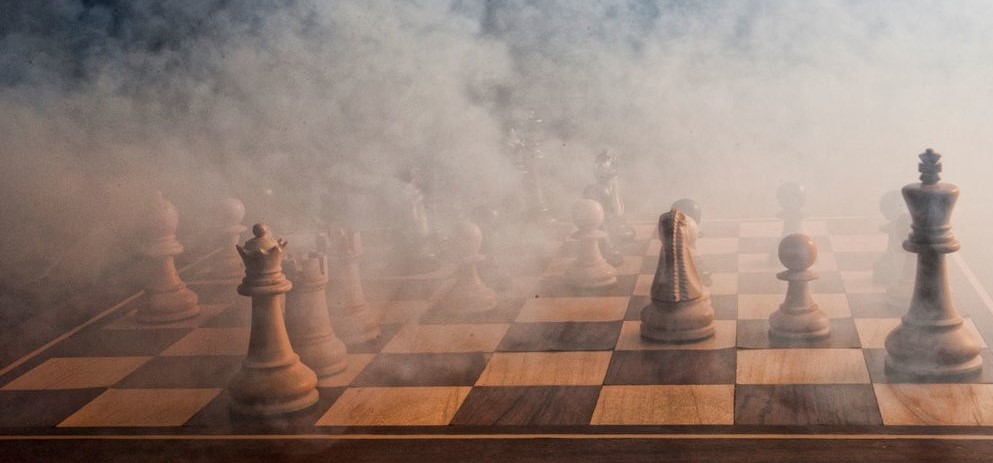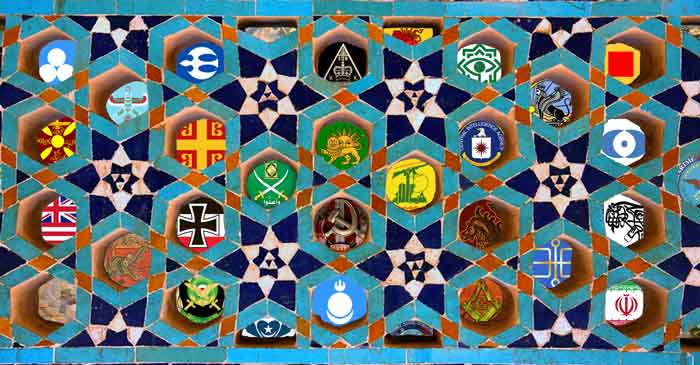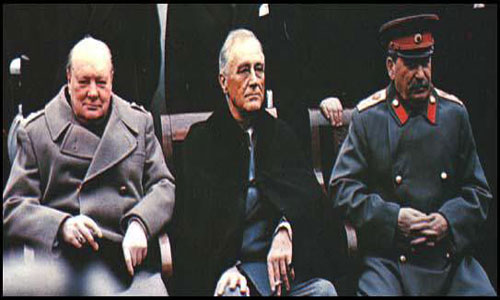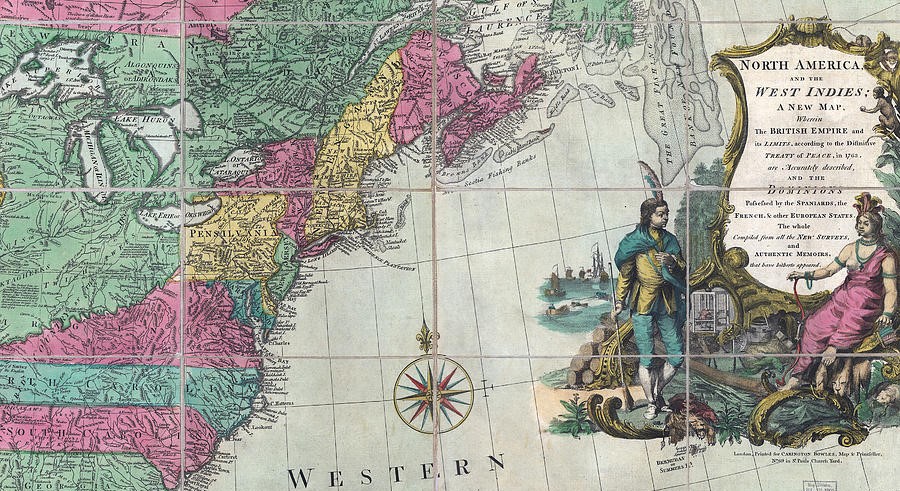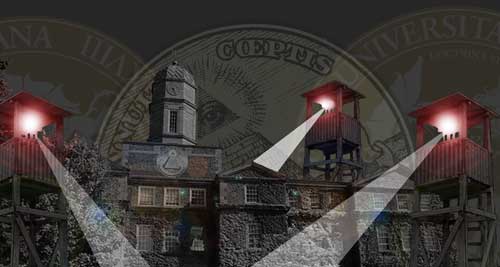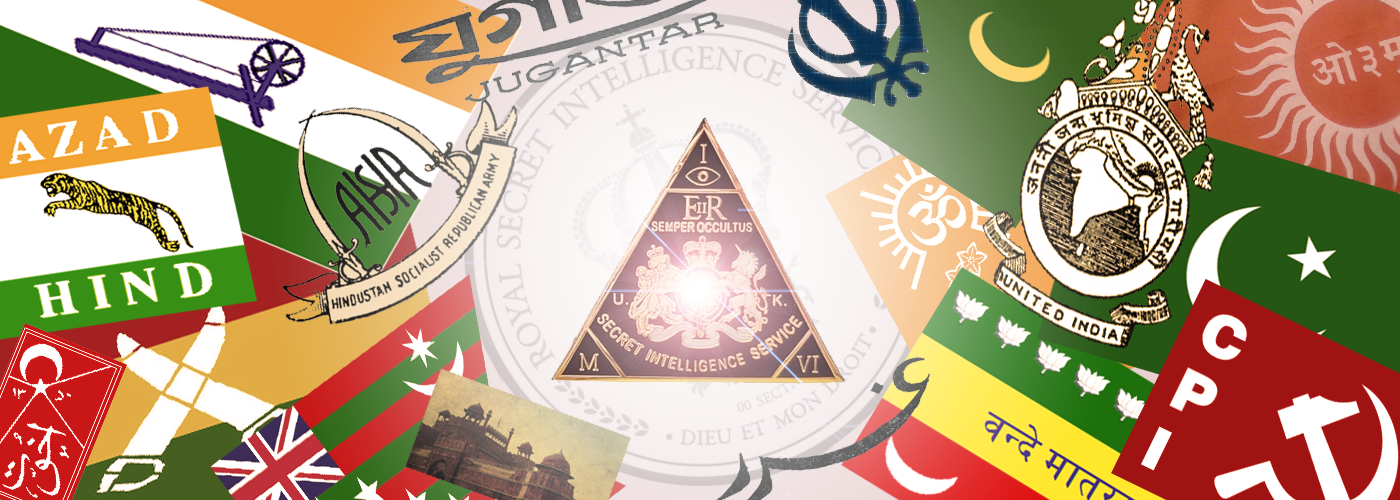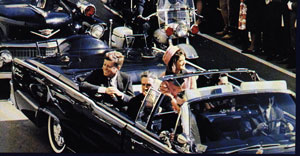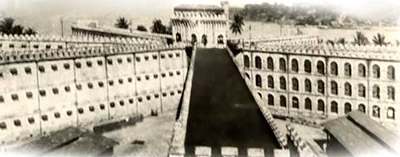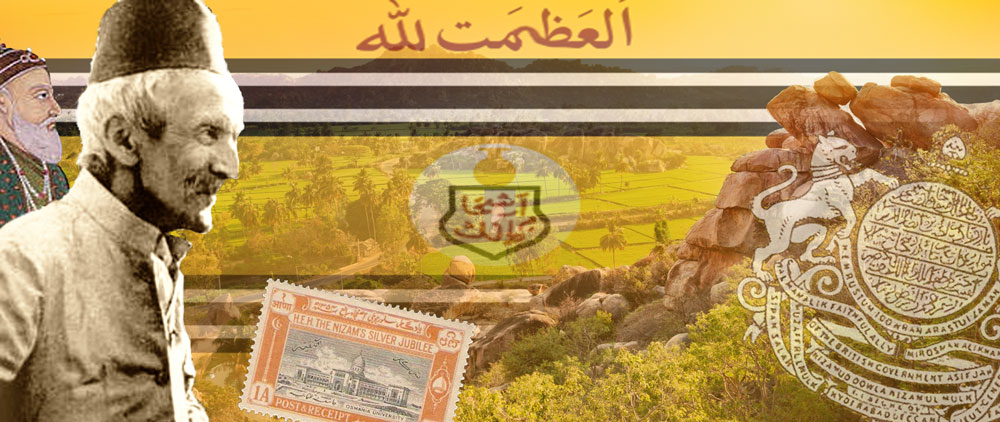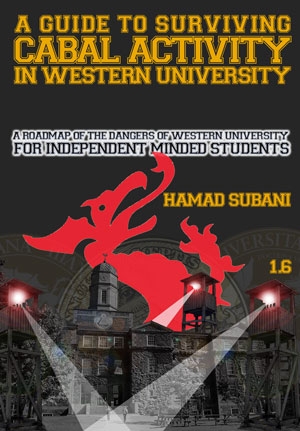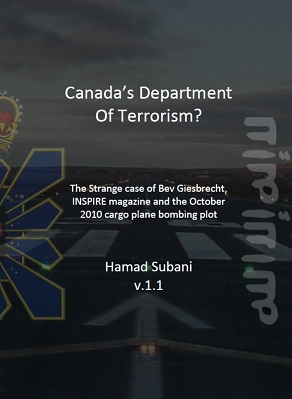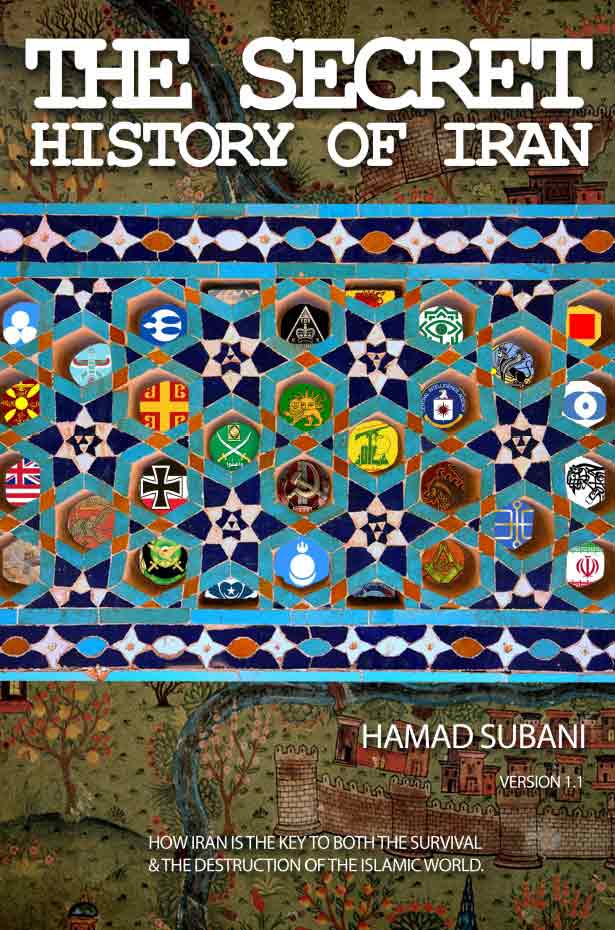
Conclusion; Revisiting the “Original Blueprint”
Its now time to revisit the “Original Blueprint” we started with earlier and see how it panned out.
Stage 1: Insertion of Localized Phoenicians among Genuine Freedom Fighters
Local crypto-Phoenician leaders were to be carefully grafted among genuine freedom fighters, and imposed upon Freedom Movements. They would also operate their own “Movements.”
This proceeded according to plan. But with some unprecedented, major setbacks. Gandhi and his supporters assumed control of the Congress Party, and could not be dislodged from its leadership. This meant that the biggest bloc in the Freedom Movement was operating under genuine leaders who were beyond Phoenician control. This in turn upset everything.
Stage 2: The transfer of Afghanistan to the British Empire
Afghanistan was to be added to the British Empire (and it would later be transferred to Pakistan when it would come into being).
Following the failure of the Khilafat Movement as well as the failure of the last Anglo-Afghan war, this goalpost was abandoned.
Stage 3: The 1857 project all over again (but this time, the British at the receiving end of the Violence)
Local crypto-Phoenician leaders were to “liberate” the entire Indian Subcontinent in a repetition of the 1857 Project. Just like the 1857 Project, this would be a unified effort, spanning different religions and groups. They would literally massacre and lynch the British on the streets. But of course, the Phoenicians, in particular, British Intelligence personnel would be quietly spared.
This completely failed.
- The Congress Party could not be converted to violent struggle following the Chauri Chaura incident of 1922 because of Gandhi. This was a major setback.
- The efforts of Savarkar, Aurobindo, the Ghadr party et all in landing armed rebels on the Orissa and Burma coasts and the Punjab spectacularly imploded. In the aftermath, most of these “Freedom Movements” had to be immediately thrown under the bus or the leaders would get jailed for good.
As a result of these failures, the British decided to delay independence and “punish” Gandhi, hoping that they could still somehow salvage the original plan using the Hindustan Socialist Republican Association. In the meantime, they decided to divert British India towards another major Phoenician project, World War II.
Stage 4: British Counterstrikes take out Genuine Leaders
Having a violent struggle against the British Empire would be used to shape the direction of the Freedom Struggle
With the failure of Stage 3, Stage 4 never saw the light of day. The Phoenicians had to kill Gandhi through local players, not the British. Phoenician candidates for the future leaders of the Subcontinent ended up in ignominy.
Stage 5: The British flee India
When the local crypto-Phoenician leaders finally became powerful enough, the Phoenicians among the British colonial administration would quietly sail to the Andaman Islands and watch the British Empire in India implode from afar. These islands were meant to be permanent British bases.
The British departure from India turned out to be surprisingly graceful, which is not what the Phoenicians wanted.
In a strange twist of fate, the Andaman Islands ended up with India. This was never meant to be. They were meant to be permanent British bases.[1]It seems the British had even established a network of underground tunnel complexes at Ross island. They made sure to dynamite the entrances before leaving.
Stage 6: Partition and the Establishment of Separate Nation States
While the Subcontinent would be liberated by a unified Freedom Struggle, immediately thereafter, orchestrated religious violence would explode, and three nations would be created for Hindus, Muslims and Sikhs. In addition to these nation states, numerous crypto-Phoenician “princely states” would also emerge as little nations in their own right.
With the failures of Stage 3, 4 and 5, The British had intervene and walk the populations of the Subcontinent in baby steps towards the final stages of the Partition, resulting in the creation of India and Pakistan. Paradoxically, they had to leave even before it was consummated because history would blame them for the ensuing violence.
“Sikhistan” never came to fruition was postponed because despite desperate efforts to carve Sikh-majority areas in the Punjab through communal violence, the newly created nation of India was now reluctant to obligate.
The princely states of British India constituted up to half its territory. The Phoenicians had already “conquered” them through marriage, and they were all set to become Spook-nations in their own right. However, the most powerful of them, Hyderabad State decided to join India rather than act as a conduit of British Intelligence. The princely state of Kashmir faced a localized rebellion, which literally inverted the position of the evil Dogras. The smaller princely states fell one by one like dominos. Later, the last (ruling) Nizam of Hyderabad, who was earlier privy to secret meetings held among the heads of major princely states, seems to have disclosed to Indira Gandhi details of what the royals of these princely states were up to, and their connections to British Intelligence. When Indira Gandhi became Prime Minister, she came after the royals of the former princely states with a big stick in hand, abolishing almost all of their special privileges. This would be the death knell of their claims to nationhood.
Stage 7: War
Pretty soon, the newly established Hindu, Muslim and Sikh states would end up fighting huge wars, resulting in huge loss of life on either side.
In India, even with the assassination of Gandhi, the Congress Party remained unchallenged. Spook candidates could not be ushered into leadership positions because of Nehru and other legitimate leaders. After Jinnah’s abrupt “departure” in 1948, Phoenician candidates failed to consolidate Pakistan, and instead a power struggle ensued. Wars between the two nations could only be organized if the leadership on both sides was in Phoenician hands. So the war was temporarily postponed.
And despite what they had been through, neither the people of India nor the people of Pakistan had the appetite for immediate war.
It goes without saying that in mid-February 2019, there was a very realistic possibility of a nuclear conflict with Pakistan, which thankfully was averted. So this goalpost has not yet been abandoned by the Phoenicians.
Stage 8: Superpower Colonies
The Muslim states (Crypto-Phoenician monarchies by now) would be adopted by NATO and India would become a satellite of the Soviet Union, which by then would have shifted completely towards Communism.
Pakistan did gravitate towards USA, and went downhill ever since. Nehru[2]The clever Nehru was aware of the full extent of British power, and so he cooperated with them, overtly and covertly, on issues such as Partition. But as British influence waned, he started acting more and more independently, until he too became a target for assassination. But unlike Gandhi, he had a better security detail. on the other hand pioneered a novel policy of Non Alignment, in which he would court both superpowers for favours but not align with either. The Soviet Union did indeed develop close ties with India by flooding it with aid, but they failed to make India a satellite nation because Nehru never allowed them to place their troops on Indian soil.
Short Conclusion
In short, there was a blueprint, but thankfully it did not proceed as per script.
How true the Republic of India has been to Gandhian ideals and to what extent it has been subverted by the Phoenicians so far are other questions, which are beyond the scope of this discussion.
The best (and probably only) way to understand the “current script” being used by the Phoenicians in Subcontinent is to refer back to the 1857 Playbook, as it is still in use by the Phoenicians. Only concerned conspiracy theorists can connect the dots and dig up the “current script.” The numerous, moneyed public institutions in the Subcontinent are busy pushing new Phoenician projects.

Epilogue: Reactivation!
You thought we would be done with the compromised “Freedom Movements” that were inclined towards violence, once the British were gone. After all, that is what these movements wanted (or so we are told). But in the case of India, we find two such movements being suddenly “reactivated” post 1947. Except that this time, they are training their guns on the leaders of independent India! This confirms that their nucleuses were based outside India all along.
Abhinav Bharat
Back in the 1930’s, British Intelligence was running a project in Hyderabad State. It was paramilitary group called the Razakars. They were being positioned to take over the administrative machinery of Hyderabad State. To make this happen, it was necessary to scare not just the Nizam but also the common citizenry of Hyderabad into believing that any kind of reconciliation with the Congress Party (or the future independent India) would only result in genocide and destruction.
This was accomplished by British Intelligence by having agent provocateurs show up in Hyderabad and organize surprise rallies in very public places, where they would chant slogans demeaning Muslims, Islam and the Nizam. Sometimes they identified as Hindu nationalists. At other times, they claimed to be members of the Congress Party (although the real Congress Party never authorized such activity. In fact, Gandhi was against intervention in princely states as it would lead to violence).
Unfortunately for British Intelligence, it was difficult to recruit such agent provocateurs from among the local population of Hyderabad State, as the locals were more or less content with the Nizam, and did not want any retaliation from the Nizam’s police. British Intelligence thus started bussing in such agent provocateurs from neighbouring Maharashtra, most of which was under the British Bombay Presidency. This had a distinct advantage. As these operatives could quickly disappear and escape beyond the borders of Hyderabad State once the job was done. They had no families or commitments in Hyderabad State. No locals would be able to identify them.
The Nizam’s police became all the more wary. And soon enough, they managed to catch and arrest numerous such agent provocateurs. One such agent provocateur was caught in 1938. It was discovered that he was not a local of Hyderabad State. He was sentenced to a year in prison.[3]George Fetherling, The Book of Assassins (Random House Canada, 2011) pp. 164–165 His name was Nathuram Godse (1910-1949). Ten years later, who would become infamous for his role in another British Intelligence op, the assassination of Mahatma Gandhi.
Like Savarkar and many other Spooks, Godse was a Chitpavani Brahmin, who are considered to be of Jewish origin. One little detail of his life omitted by establishment historians is that in 1929, his whole family relocated to the Spookopolis of Ratnagiri.[4]George Fetherling, The Book of Assassins (Random House Canada, 2011) pp. 164–165. Guess who else was there.
We are told that after being propitiously discharged from the Andamans in 1921, Savarkar and his brother were in a jail in Ratnagiri till 1937. In reality, the British provided him with an upscale bungalow, where he was meeting and hobnobbing with important leaders of the Freedom Struggle. And why would the British choose Ratnagiri of all places in British India? Was it because it was an ancient stronghold of the Jewish-origin Chitpavani brahmins? There are theories that this was where they had initially landed in India by sailboat in ancient times. In other words, Savarkar was having an extended family reunion.
It may never be known how many other British Intelligence ops Godse participated in, before he was selected for the op of assassinating Mahatma Gandhi. He only got caught and jailed in Hyderabad State because it was outside British-Indian jurisdiction. Within British-Indian jurisdiction, British Intelligence operatives could operate with complete impunity. This is evidenced by the fact that Godse was directly or indirectly involved in a total of six assassination attempts on Mahatma Gandhi (with only the last attempt being successful). In many of the earlier attempts, he was openly identified. Yet the police of British India never bothered to arrest him.
As the clock for complete British withdrawal started ticking, the Phoenicians realized that it would be incredibly difficult to assassinate Gandhi in an independent India, where British Intelligence could no longer openly operate. Godse and Co. finally succeeded on 30th January 1948. While India would gain “independence” on 15th August 1947, many key British institutions were still operating under British officials. And British Intelligence was still busily operating in this twilight zone.

At the time of the assassination, Gandhi was stationed at a large mansion in New Delhi known as Birla house. It belonged to his friend, the industrialist Ghanshyamdas Birla. Strangely enough, his brother Jugal Kishore Birla (along with another Jain industrialist) were later found to have invested a sizeable amount in a company which operated a Marathi daily, the editor of which was Godse! To quote,
Godse was the editor of Agrani – Hindu Rashtra, a Marathi daily from Pune which was run by the company “The Hindu Rashtra Prakashan Ltd” (The Hindu Nation Publications). This company had contributions from such eminent persons as Gulabchand Hirachand, Bhalji Pendharkar, and Jugalkishore Birla. Savarkar had invested ₹ 15000 in the company.
Immediately after the assassination, an American marine (who also happens to be the vice consul attached to the American Embassy) shows up and grabs hold of the disarmed Godse, and starts shoving him towards the guards. Maybe he was there to prevent Godse from being lynched by the crowd.
Despite being armed, Godse made no attempt to flee, and was instead escorted out by police. He knew he had friends inside the system. Later Godse made an appeal to a High Court to drop conspiracy charges, stating that there was no conspiracy, he alone was solely responsible for the assassination. The Phoenicians did not want a big investigation. The trial and execution were rushed, as it is done in coverups.
Strangely enough, the jurisdiction of Godse’s trial should have been New Delhi. Instead, the trial gets moved to picturesque Shimla, a vacation spot for British spooks in the Spookdom of Punjab. Currently, it is 8 hours away from Delhi by car. One of the prosecutors of Godse was a certain Daftary. This name is usually found in Ismaili circles.
Strangely enough, the jurisdiction of Godse’s trial should have been New Delhi. Instead, the trial gets moved to picturesque Shimla, a vacation spot for British spooks in the Spookdom of Punjab. Currently, it is 8 hours away from Delhi by car.

In the 1857 Project, the British Commander in Chief was operating out of the Ambala cantonment. This was the epicentre of British Intelligence back then. Guess where Godse was brought to have his execution “processed.”
We are told that Godse and another conspirator were hanged in Ambala Gaol on 15 November 1949, which is currently four hours away from both Shimla and Delhi by car. While India became “independent” on 15th August 1947, there were so many British units that it was impossible to withdraw all of them at once, because of limited sea transport. And so, the British withdrawal lurched till 1950. Ambala, being one of the most important of British military bases, still remained in quasi-British control till 1950, as it had a large airport through which evacuations of British military personnel were being conducted. Was this the reason why Godse was “hanged” here? Why was he “cremated” rather than having his body being given to his family? Or was he? Did he catch the plane to London?
While Savarkar was arrested in connection with the assassination, charges against him were later dropped because of “lack of evidence.” He even got a last laugh by writing up a little spiel for Godse, which was read in court by Godse. Through this spiel of Godse, Savarkar whines that while Gandhi’s ideas were indeed lofty, they could not be manipulated, appropriated and bastardized by more opportunistic leaders like him. Only Gandhi seemed to have the magic formula to make them work.
If the country wanted his [Gandhi’s] leadership, it had to accept his infallibility; if it did not, he would stand aloof from the Congress and carry on in his own way. Against such an attitude there can be no half-way house; either the Congress had to surrender its will to his, and had to be content with playing the second fiddle to all his eccentricity, whimsicality, metaphysics and primitive vision, or it had to carry on without him. He alone was the judge of everyone and everything; he was the master brain guiding the civil disobedience movement; nobody else knew the technique of that movement; he alone knew when to begin it and when to withdraw it.[5] Tushar A. Gandhi, ‘Let’s Kill Gandhi’ (New Delhi: Rupa & Co. 2009) 723.
In other words, the Phoenicians could not appropriate Gandhi because he was too spontaneous, too original.
Reactivation of Abhinav Bharat
Savarkar had an organization called Abhinav Bharat, that was all set to start a violent Revolutionary Freedom Movement in India. As we have read earlier, the plans (thankfully) never came to fruition. The Phoenicians decided that the Assassination of Mahatma Gandhi could be used as a last-ditch attempt to oust the Congress and bring the Abhinav Bharat to power. After gaining power, it was expected to start war with Pakistan and communal riots with Muslims in India. And with the British gone, there would be nothing stopping them.
In almost all published accounts of the assassination, Godse was wearing a khaki dress. But following the assassination, there were widespread rumours that Gandhi had been killed by a bearded Muslim Maulvie. Was Godse dressed up as such? We may never know. It seems that while he was under arrest, every effort was made to prevent him from being seen or photographed. But one curious Congress leader managed to use his connections to sneak a peak, and recognized Godse for who he was, and raised alarm. Despite this plot hole, Abhinav Bharat was still reactivated to proceed with the original plan. The gun used by Godse was sourced from the Spook-state of Gwalior. During the investigation of the assassination, it was discovered that several Spook-states were involved in a secret movement to overthrow the Congress government of India. Prominent among these princely Spook-states were Gwalior, Baroda, Bharatpur and Bhopal.[6]Tushar A. Gandhi, ‘Let’s Kill Gandhi’ (New Delhi: Rupa & Co. 2009) 785, 865.
But with Godse being exposed for who he was, public opinion turned against the Hindu nationalists, who soon saw their offices ransacked, followed by mass-arrests.
The Indian National Army and the Anushilan Samity
We have already discussed the sad fate of Subhas Chandra Bose, aka Netaji, and his badly iinfiltrated Indian National Army.
In 1956, a mysterious recluse showed up in the Spookopolis of Faizabad. By the time he died in 1985, he had spun a massive secret network of former Indian National Army diehards. But even more mysteriously, this secret network also had people who were once affiliated with the proto-Communist Anushilan Samity of Aurobindo, as well as “Hindu nationalists” associated with Savarkar’s organizations. In fact, the recluse corresponded with the aged Trailokya Nath Chakravarty, the earliest member of the Anushilan Samity.[7]Anuj Dhar, What Happened to Netaji? (New Delhi: Vitastaa Publishing Pvt Ltd, 2016) p. 68
All these followers were convinced that the recluse was none other than Subhas Chandra Bose. Needless to say, this would a great cover for Phoenicians hell bent on fighting the leaders of independent India. To quote a 1964 CIA document which has been declassified,
There now exists a strong possibility that Bose is leading the rebellious group undermining the current Nehru government [8]Anuj Dhar, What Happened to Netaji? (New Delhi: Vitastaa Publishing Pvt Ltd, 2016) p. 179.
However, it seems the network was wrapped up in the 80s, when the old members of these organizations died.
CONTENTS
- The Secret History of British India’s “Freedom Movements.”
- An Introduction to the “1857 Project”
- The 1857 Project as a Spook Playbook for later Ops in the Subcontinent
- Phoenician Spookopolis’ Across the Subcontinent
- A (long) note on Fazl-e-Haq Khairabadi
- The Strange Fate of Jhansi State
- Later “Freedom Movements” that follow the 1857 Rebellion Playbook
- How the Blueprint Unfolded Part I – The Bengal Front
- How the Blueprint Unfolded Part II -The Ghadr Party and the Punjab Front
- How the Blueprint Unfolded Part III -The Communalists
- How the Blueprint Unfolded Part IV – The Non-Cooperationists
- Conclusion; Revisiting the “Original Blueprint” + Epilogue: Reactivation!
| ↑1 | It seems the British had even established a network of underground tunnel complexes at Ross island. They made sure to dynamite the entrances before leaving. |
|---|---|
| ↑2 | The clever Nehru was aware of the full extent of British power, and so he cooperated with them, overtly and covertly, on issues such as Partition. But as British influence waned, he started acting more and more independently, until he too became a target for assassination. But unlike Gandhi, he had a better security detail. |
| ↑3 | George Fetherling, The Book of Assassins (Random House Canada, 2011) pp. 164–165 |
| ↑4 | George Fetherling, The Book of Assassins (Random House Canada, 2011) pp. 164–165. |
| ↑5 | Tushar A. Gandhi, ‘Let’s Kill Gandhi’ (New Delhi: Rupa & Co. 2009) 723. |
| ↑6 | Tushar A. Gandhi, ‘Let’s Kill Gandhi’ (New Delhi: Rupa & Co. 2009) 785, 865. |
| ↑7 | Anuj Dhar, What Happened to Netaji? (New Delhi: Vitastaa Publishing Pvt Ltd, 2016) p. 68 |
| ↑8 | Anuj Dhar, What Happened to Netaji? (New Delhi: Vitastaa Publishing Pvt Ltd, 2016) p. 179 |


